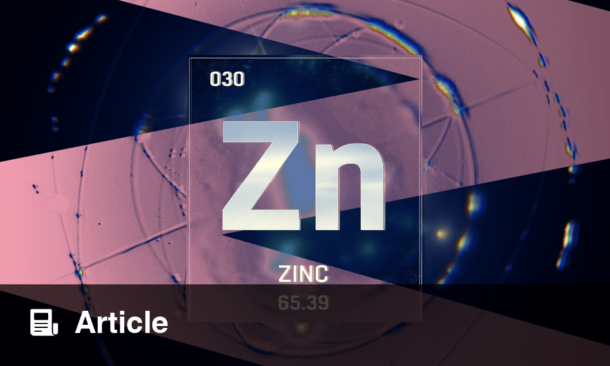Sven Francque | EASL Educational Councillor; Chair of the Department of Gastroenterology and Hepatology, Antwerp University Hospital, University of Antwerp, Belgium
Citation: EMJ Hepatol. 2024. https://doi.org/10.33590/emjhepatol/RLRC3633.
![]()
What initially led you to hepatology and, more specifically, metabolic dysfunction associated steatotic liver disease (MASLD)?
During my studies, I was most fascinated by the mechanisms behind diseases. That was what always triggered my interest, as well as trying to link the mechanisms of the diseases and how you treat them. And I must say, I was first more interested in cardiology, because of all the physiology behind it; how you influence cardiac function was very, very interesting. However, I found the clinical daily practice less interesting. I then got in touch with a liver specialist, and I realised how complex the liver was in terms of pathophysiology and this switched my interest. My research looks into the vascular mechanisms, but it’s that complexity of pathophysiology, and the link with the treatment of the diseases that has always triggered my interest in the liver; it being such a complex organ with such a huge impact on whole body metabolism.
Can you describe the role of the EASL Educational Committee for our readers?
The aim is, in the end, to provide the best treatment for the patient, and that’s what we are here for. But to deliver that you must have the right knowledge and know how to apply it to make sure that, in the end, the care is delivered to the highest quality possible. And that’s the role of the Educational Committee, to oversee and develop tools to educate health care professionals. It is important that scientists, nurses, liver doctors, and doctors of different specialities, as well as people living with liver disease, have access to high-quality information. There is also the training aspect, because people need to know, of course, a lot of things to be able to help the patients, but they also need to have the right skills; they need to know how to perform certain techniques, and handle patients. That is the mission of the Education Committee.
If you look at all the activities that we are doing, you will see that the portfolio is very diverse with a lot of training designed for different target groups. We develop different resources for individuals in different stages of their clinical or scientific career. We have e-learning courses, accessible guidelines, journal clubs, schools, and organise one-to-one mentorships.
How have you aimed to improve EASL’s educational strategy throughout your time as Educational Councillor?
It’s now the end of my first of 4 years, so I still have a way to go. One of the big projects I am particularly trying to do is to develop a kind of core curriculum in hepatology training. We already have a lot of stuff for the training of a gastroenterologist, including a chapter on hepatology in the European board’s blue book. But hepatology is not always done by gastroenterologists; it’s different from one country to another. Also, what a general gastroenterologist needs to know is different from the knowledge of somebody who qualifies as a specialist in liver diseases. So, the aim is to start working on a standardised core curriculum for what somebody qualified as a specialist in liver diseases should know. Subsequently, once we have that as a kind of international standard, we can see what educational material fits with it and if there are gaps that we need to fill. And then of course, it’s also trying to develop something that is not just for specialised physicians, but also to see how we can assist other types of healthcare providers, such as nurses, to take care of patients with liver disease.
What areas of hepatology do you think remain underrepresented in liver education worldwide?
There are some fields that are in development, of course. We have the different disease areas, which I think are well covered, though they are probably working a little bit too much in silos. The transition from paediatric to adult care is for sure something that could be improved. I think the field of rare liver diseases has improved a lot because the European Union is now supporting reference networks for rare diseases, and there’s one for liver diseases. So, progress has been made in rare liver diseases, but still, it’s an area that deserves to be highlighted. There have also been many developments in the field, including the increased use of endoscopy and the use of ultrasound, which is very different from one country to another but adds a lot of value to hepatology clinics.
How can EASL and the Educational Committee help young healthcare professionals entering the world of hepatology today?
First of all, we have a lot of offerings they can utilise in their education, and a lot of opportunities for them to participate in different activities. The second thing is, of course, all the material that is available on the EASL Campus, and we now have a very user-friendly app with easy access to the guidelines. We are making it easy to have access to high-quality education, and some of that education is also Continuing Medical Education-accredited so they can use it to get the necessary credits. But I think one of the other important things is that with meetings like EASL’s Liver Congress, they can get in touch with colleagues and build a network amongst young people and those more experienced. I think that is something that we also see with the activities that we do with the Educational Committee. For example, an EASL school has 25 young people who go to a specific institution for a few days and receive dedicated training on a specific topic from the team there. That’s the training, but they also come to know each other as a result. They come to know the experts, and those connections are there to stay. That network is useful for them in their development for years to come; not just in the hepatology clinic, but also in terms of scientific meetings at conferences. It’s really about building a community that helps develop skills and technology, but also helps each other, which is invaluable for people. I experienced it myself, and I now hear it from the other colleagues, because unfortunately, I’m not that young anymore. But that’s a big added value of the educational activities that we do.
Earlier this week, you chaired a session on the rapidly changing landscape of metabolic dysfunction-associated steatotic liver disease. Was there anything that surprised you during the discussion, and what was your key takeaway?
Nothing really surprised me, but the discussion was very interesting because it, first of all, confirmed that the field is really moving. With the first drug approved, it creates some excitement, but we should be realistic. Just because there is now a drug approved, it does not mean that all our problems are solved. In the session, we highlighted a few important points about finding the right place for the liver biopsy, and we had a strong focus on what is needed to better understand how we can work with non-invasive tests for monitoring disease evolution and treatment response. Everybody agrees that we have already done quite a lot of work, but in terms of monitoring patients over time, there’s still a lot more to be done. There is still a lot of room for progress in treating patients with more advanced disease stages, and patients with cirrhosis.
What has been your highlight of EASL 2024?
For me, one of the highlights was the new guideline, which we have been working on for more than a year with three different societies. We were able to finalise it for the Congress, so we could launch it and incorporate it immediately into the app. We launched the EASL guidelines app this year, but being able to immediately incorporate the big new guidelines on metabolic dysfunction-associated steatotic liver disease (MASLD) was a standout highlight. Besides that, there were a lot of very interesting scientific communications on new drug treatments in MASLD. It was very impressive to see several oral presentations with high-level results of Phase II trials, really showing that, as with the session you were alluding to earlier, the field is moving.







